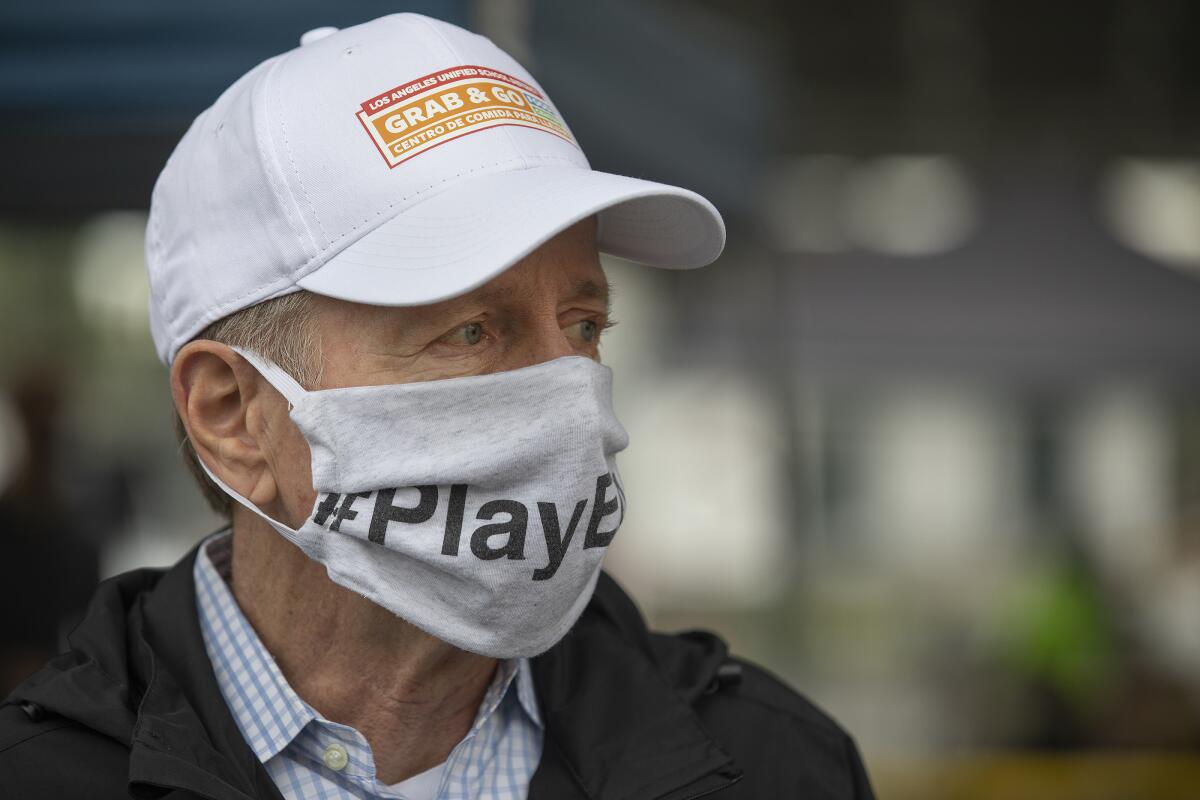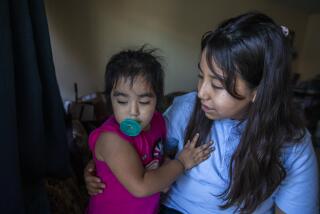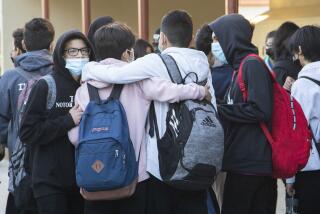L.A. schools reopening: 20% of parents, 36% of staff are not ready for campuses to open

About 20% of Los Angeles parents said they are not ready to send their children back to a campus this fall, and more than a third of employees said they are against returning amid the COVID-19 pandemic, according to survey results that add to mounting concerns about the hoped-for Aug. 18 reopening of campuses in the state’s largest school system.
L.A. schools Supt. Austin Beutner said Monday that no decision has yet been made on whether campuses will reopen in the fall for in-person classes but that the district’s recent survey compounded by the ongoing spike in infections and hospitalizations has intensified concerns.
“This presents a challenge because we know the best learning environment for students is in a school,” Beutner said in broadcast remarks.
“We’ve still got a bit of time,” Beutner said in a later interview. “We don’t have an unlimited amount of time.”
He spoke as local and state officials have ordered a partial rollback of attempts to reopen businesses and public places, including closing bars in L.A. County and beaches over the Fourth of July weekend.
Many other school systems — including San Diego Unified, the state’s second largest — have announced that campuses would reopen in some fashion, probably a hybrid learning setup that combines staggered attendance in small classes with online instruction and extensive work-at-home assignments. Districts also are preparing online-only options for families.
L.A. Unified, too, has been developing such frameworks. But on Monday Beutner outlined parameters for reopening that would be difficult to achieve.
“The only way to do this is with extensive testing and contact tracing,” Beutner said in his broadcast remarks. “In all of the countries — Denmark, Germany, Israel and others where students are back in school facilities — they have put in place extensive testing and contact-tracing capability.”
He added that the school district should not, and possibly could not, take the lead in this effort.
“State and local health authorities should be responsible for this,” Beutner said. “This shouldn’t be an optional part of the puzzle.”
In the survey results, which were released Monday, 59% of families said they were ready to send students back to a campus. However, close to half of those ready to return also insisted on the condition that “fewer students were on campus at any given time.” And 1 in 5 were uncertain about returning in any format; another 1 in 5 said they were simply unwilling to send their children back.
The district, which has about 487,000 students, received about 85,000 responses from families. Parents and employees completed the survey over most of June, at the end of the school year.
An official with a South Los Angeles nonprofit said it’s no surprise that most parents favor a return to campus.
“They’re really concerned about the fact that their children are not learning during this COVID crisis, and they need a lot of support in helping their children recover and remediate the time that they lost so far,” said Aurea Montes-Rodriguez, executive vice president of Community Coalition.
Moreover, many parents are considered essential workers, she said. They not only need child care but have difficulty supervising their children’s academic work, she said.
In the survey, more than three-fourths of parents rated as “essential” frequent hand-washing; sanitation of high-touch surfaces; procedures in place “if someone is diagnosed with the virus”; and daily temperature checks.
Among employees, 44% were ready to return, 20% were uncertain and 36% were against it. Moreover, 56% of employees said they’d prefer to do their work “primarily from home.”
The district employs close to 70,000 and received 48,000 employee responses.
Safety is paramount among an array of concerns, said Max Arias, executive director of Service Employees International Union Local 99: “We can’t just plan to recover from the pandemic and pick up where we left off.”
His union represents most non-teaching, lower-wage district workers, including cafeteria workers, custodians and bus drivers.
Over the summer, the L.A. teachers union will be bargaining “on what it will take to keep our students, members and community safe and healthy as different options for reopening are being considered,” said Cecily Myart-Cruz, president-elect of United Teachers Los Angeles. “We will be guided by the advice of health professionals and other experts.... LAUSD serves 88% students of color, and their families are disproportionately bearing the brunt of the health and financial devastation of this pandemic.”
School board member Nick Melvoin said officials had hoped to release a firm plan around the beginning of July but that the surge in infections and the results of the survey prompted reconsideration of what it would take both to operate safely and build confidence in that safety among parents and staff.
One approach, if necessary, he said, would be for campuses to reopen when ready on a staggered basis over the first few months of school, perhaps with a priority placed on elementary schools.
Melvoin said he hoped that key decisions could be made by July 18, giving parents a month of planning time before the start of school.
Beutner stressed the need for more resources, including an estimated $3 million per day for additional child-care funding if students move to a part-time on-campus schedule.
“What we’re trying to do is use our voice to bring those [issues] to the center,” he said. “They need to be a topic of conversation in Sacramento and in the county Board of Supervisors, and then in the city halls and the communities that we serve — now, not a month from now, not two months from now. They need to be in the top of the conversation now.”
Times staff writer Sonali Kohli contributed to this report.
More to Read
Sign up for Essential California
The most important California stories and recommendations in your inbox every morning.
You may occasionally receive promotional content from the Los Angeles Times.











